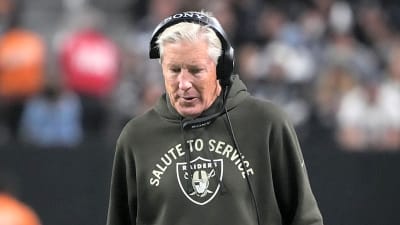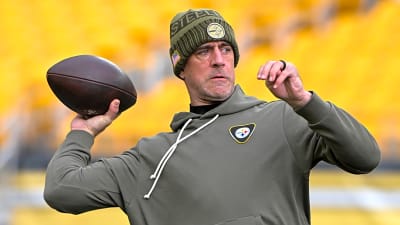
The Willander Watch is over.
What was believed to be a disagreement over performance bonuses turned out to be exactly that, as Tom Willander’s camp and the Vancouver Canucks’ front office met in the middle to sign an ELC with slightly higher bonuses than last year’s 11th overall received – but only slightly.
The stand-off can now (hopefully) be placed firmly in the rear-view mirror, and the focus can shift to Willander’s now-inevitable NHL debut.
This is, perhaps, a far bigger deal than the average signing of a prospect. Not only is Willander a blue-chip asset – maybe the best single prospect the Canucks have in their system, and if not, close – he’s also seen as an important missing piece on their roster.
In fact, one might argue that, with Willander now under contract, the Canucks’ blueline is approaching its final form.
At least for the time being.
The Left Side
The entire thing definitely hinges on Quinn Hughes, still under contract until July 1, 2027. So, when we say the blueline is complete or near-complete, that obviously contains an ‘until Hughes either re-signs or departs.’
But until that time comes, Hughes remains the undisputed 1D and MVP of this team. That’s been the case for a while, but what has changed is the amount of support available behind him now on the depth chart.
Get Hughes under another contract, and one might argue that the Canucks are set for at least the rest of this decade.
Behind Hughes on the left side comes the recently-acquired-and-extended Marcus Pettersson. He’s a long-proven top-four talent, he just turned 29, and he’s signed at what will become an increasingly-bargain rate of $5.5 million until 2031.
In fact, we might go as far as to say that the top-half of the left side is locked in for the time being, if not for the existence of Elias Pettersson.
We’re pretty sure this is no flash-in-the-pan situation. It’s not Akito Hirose 2.0. The youngest Pettersson played 28 games for the Canucks this past season at the age of 21, and only seemed to get better with each passing moment.
EP25 already pushed some veterans further down the depth chart with his play. As a result, he’s more than penciled in to the 2025/26 roster – his name’s down in ink. The only real question is how soon he’ll start pushing the other Pettersson for some of his blueline minutes.
Through Hughes, Pettersson, and Pettersson, the Canucks already have in their possession an extremely strong left side – one of the best in the entire NHL, in fact.
Behind them, GM Patrik Allvin will almost certainly look to sign a veteran LD for injury coverage and pressbox duty. But there are a couple intriguing left-shooting D coming up through the prospect ranks, too, in the form of Kirill Kudryavtsev and Sawyer Mynio.
The Right Side
Absent a Norris-winning defender, the right side of the Canucks’ blueline is definitely not as strong as their left side. But it is arguably more settled in the long-term, especially now that Willander’s in the picture.
Filip Hronek continues to show quite well as a top-pairing RD, and played especially consistently with Hughes out of the lineup this year. Hronek is 27 and won’t turn 28 until partway through next season, and he’s signed until 2032. In a league where RD talent is always at a premium, having one of such high quality signed through their prime is an absolute luxury. The fact that his salary will take up an increasingly-smaller percentage of the cap as it ages is just gravy.
The first question mark comes in the form of Tyler Myers, and it’s really only related to his age. Myers is 35 and under contract for two more seasons. Some form of slowdown is expected eventually, but the truth of the matter is that Myers’ two most recent seasons have been his best as a Canuck, and they have seen him usually play to a top-four quality. That had a lot to do with Rick Tocchet’s coaching, but with defence-oriented assistant Adam Foote taking over, there should be some continuity there.
Whenever Myers does need to slide down out of the top-four, there is a succession plan in place, and it is Willander. He’s one of the best RD prospects in the world, and is coming out of a Boston University program that has often delivered its top defenders directly into the NHL.
Really, there’s no telling how immediately ready Willander will be. But with Hronek and Myers already in place, he doesn’t have to immediately ready for anything other than spot duty. So long as Willander can start getting some reps in now so as to eventually be ready to take over for Myers, the plan is working.
Even if Willander isn’t quite ready for NHL minutes right off the bat, that’s okay, too, because Victor Mancini is here, and already looks capable of bottom-pairing minutes. We predicted earlier that there may be a bit of a shuffle between the two of them, with one being on the bottom pairing and the other being in Abbotsford at alternating points in the 2025/26 season.
That will probably necessitate the signing of a RD veteran for pressbox duty, or perhaps the re-signing of Noah Juulsen. Either way, the long-term vision is clear: Myers will likely retire at the end of his contract, and by that point it’s hoped the depth chart goes Hronek, Willander, and Mancini.
If all pans out, it’s not as strong as the left side due to the Hughes factor, but it’s plenty strong all the same.
In both the short- and long-term, it would seem that the Canucks’ blueline has reached a state of completion – again, pending the future of Hughes and his contract.
If there’s any downside to be found here, it’s that the Canucks now won’t want to deviate much from this blueline plan, and that will add some challenge to their attempts to rebuild their forward corps. Ideally, you want to trade away from a strength to shore up a weakness. Here, we can see that the Canucks’ blueline is a strength, but really deep enough to trade away from. They’ll want to hold on to all seven of these pieces we’ve mentioned. That means any trades for forwards are going to have to be built on different assets.
But that’s a challenge for Allvin and Co. to tackle. One they’ve already tackled is one that once seemed nigh-impossible in Vancouver. They’ve built a blueline that is decidedly more than ‘adequate’ – it’s downright promising.
More must-reads:
- Four NHL players who could be traded soon
- Florida Panthers center Eetu Luostarinen suffers freak injury in 'barbecue accident'
- The 'NHL all-time goal leaders' quiz
Breaking News
Trending News
Customize Your Newsletter
 +
+
Get the latest news and rumors, customized to your favorite sports and teams. Emailed daily. Always free!








